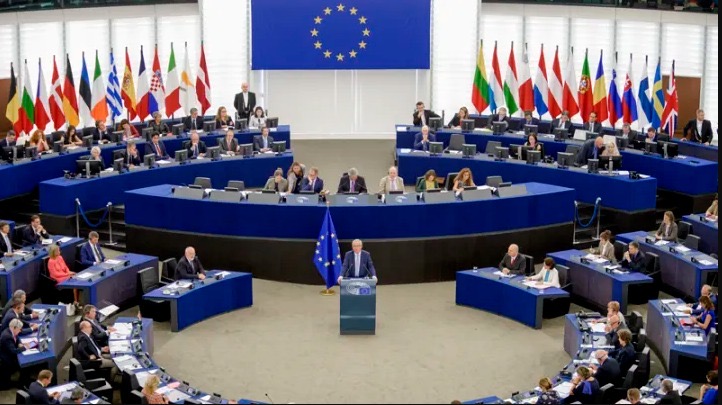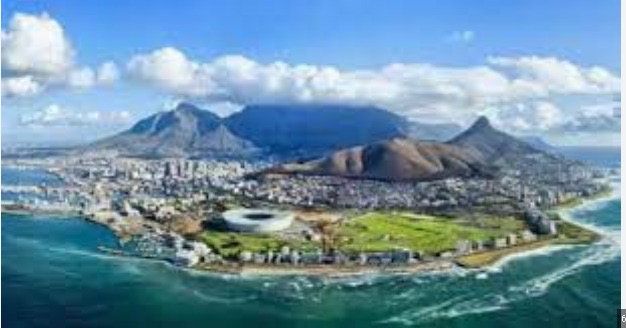The air we inhale sustains life itself, yet its purity often goes unnoticed. Worldwide, including in the diverse terrains of Africa, air pollution has emerged as a significant health threat. Each year, the World Health Organisation (WHO) reports a staggering 4.2 million premature deaths due to outdoor air pollution. In Africa, swift urbanisation, industrial growth, and the widespread use of fossil fuels have exacerbated this issue. However, amid this challenge, some African cities are shining examples, showcasing commendable efforts towards achieving cleaner air and a carbon-neutral environment.
In a recent evaluation by the WHO, several cities across Africa have shown significantly lower levels of carbon dioxide and notably superior air quality. These cities serve as inspiring models of sustainable practices and shared dedication towards preserving the environment.
Port Louis, Mauritius: Fostering Environmental Excellence
Port Louis, the capital of Mauritius, exemplifies the potential for environmental conservation within a small island nation. Recognised for its beautiful beaches and lively culture, the city maintains an annual mean PM2.5 level of 10 µg/m3, comfortably below the WHO-recommended standard. This accomplishment reflects Mauritius’ proactive measures in promoting renewable energy and reducing reliance on fossil fuels.
Victoria, Seychelles: A Refreshing Environment
Victoria, the capital city of the Seychelles, presents another success story, with a PM2.5 level slightly above the recommended threshold at 11 µg/m3. Despite this minor deviation, the city sets a remarkable standard compared to its other African counterparts.
Maun, Botswana: Guardianship for Environmental Preservation
Maun, situated in the heart of Botswana, emerges as a city fiercely protective of its natural beauty. Recording an annual mean PM2.5 level of 12 µg/m3, just above the recommended level, Maun advocates for sustainable living and renewable energy. Local figures like Dr. Raj Ramdenee, a respected environmentalist and professor, actively promote a greener and healthier future for their city.
Livingstone, Zambia: Aiming for Air Purity
Livingstone, nestled in the southern part of Zambia, has worked diligently to enhance its air quality. With a PM2.5 level of 14 µg/m3, slightly surpassing the recommended level, the city reflects a joint effort between the government and its residents to reduce emissions and promote cleaner fuels.
Gaborone, Botswana: Progress in Sustainability
Gaborone, the vibrant capital city of Botswana, showcases progress towards sustainability despite its rapid expansion. Reporting a PM2.5 level of 16 µg/m3, slightly above the recommended threshold, Gaborone’s commitment to renewable energy and emission reduction indicates a promising direction.
Agadir, Morocco: Combating Air Pollution by the Coast
Agadir, a coastal city in Morocco, demonstrates commendable efforts to control air pollution. With a PM2.5 level of 18 µg/m3, slightly beyond the recommended limit, the city’s focus on sustainable transportation and improved air quality initiatives deserves recognition.
Praia, Cape Verde: Ambitious Environmental Goals in a Small City
Praia, the capital of Cape Verde, despite its small size, showcases dedication to cleaner energy sources and reduced transportation emissions. Its PM2.5 level of 19 µg/m3, slightly above recommendations, indicates ongoing efforts to further improve air quality.
Tunis, Tunisia: Urban Pursuit of Cleaner Air
Tunis, the bustling capital city of Tunisia, contends with a PM2.5 level of 21 µg/m3, marginally exceeding the recommended threshold. Nevertheless, the city’s strides towards clean energy and enhanced transportation highlight its commitment to a pollution-free environment.
Maseru, Lesotho: Embracing Sustainable Approaches
Maseru, the capital of Lesotho, exhibits notable progress despite its modest size. With a PM2.5 level of 22 µg/m3, slightly above recommendations, the city exemplifies the strength of collective action in promoting sustainable living.
Windhoek, Namibia: Balancing Growth and Sustainability
Windhoek, the thriving capital of Namibia, showcases commendable efforts towards sustainability. Reporting a PM2.5 level of 23 µg/m3, slightly above the recommended threshold, the city’s commitment to balancing development with environmental preservation is evident.
Factors Influencing Air Quality in African Cities
Industrial activities, transportation, and weather patterns significantly impact air quality across African cities. Efforts to reduce emissions from industries and vehicles, along with initiatives promoting cleaner energy sources and sustainable transportation, are crucial steps towards achieving cleaner air.
Recognising air pollution as a pressing environmental issue in Africa, these cities stand as proof of the transformative power of collective action. Collaborative efforts among governments, businesses, and citizens signify a promising narrative towards a future with cleaner air prevailing. The journey towards a carbon-neutral Africa continues, driven by a steadfast determination to create a healthier and more sustainable continent for future generations.


